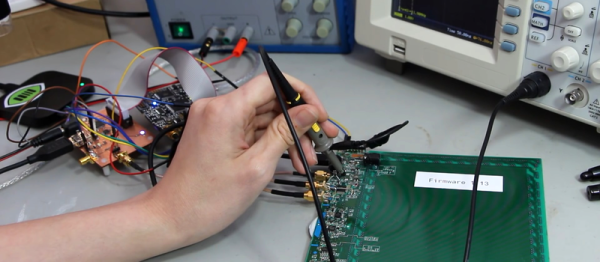Sometimes when you need something, there is a cheap and easily obtainable product that almost fits the bill. Keyword: almost. [Micah Elizabeth Scott], also known as [scanlime], is creating a hovering camera to follow her cat around, and her Feiyu Mini3D 3-axis brushless gimbal almost did everything she’d need. After a few modifications, [Micah] now has a small and inexpensive 3-axis gimbal with a Crazyfire HZ-100P SDI camera and LIDAR-Lite distance sensor.
At thirty minutes long, [Micah’s] documenting video is rife with learning moments. We’ve said it before, and we’ll say it again: “just watch it and thank us later.” [Micah Elizabeth Scott] has a way of taking complicated concepts and processes and explaining things in a way that just makes sense (case in point: side-channel glitching) . And, while this hack isn’t exactly the most abstractly challenging, [Micah’s] natural talent as a teacher still comes through. She takes you through what goes right and what goes wrong, making sure to explain why things are wrong, and how she develops a solution.
Throughout her video, [Micah] shares small bits of wisdom gained from first-hand experience. From black hot glue to t-glase (a 3D printing filament), we learned of a few materials that could be mighty useful.
We’re no strangers to the work of [Micah Elizabeth Scott], she’s been on the scene for a while now. She’s been a Hackaday Prize Judge in 2015 and 2016 and is always making things we love to cover. She’s one of our three favorite hackers and has a beautiful website that showcases her past work.
Video after the break.












